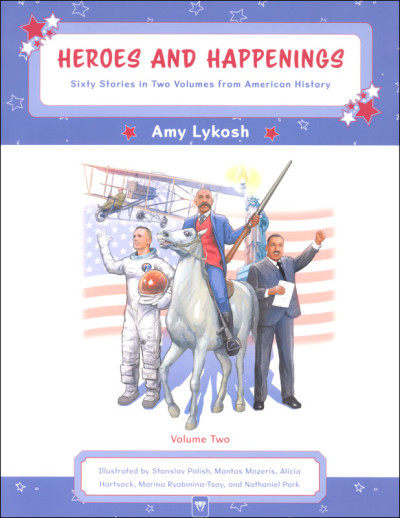We use cookies to make your experience better. To comply with the new e-Privacy directive, we need to ask for your consent to set the cookies. Learn more.
Heroes and Happenings Volume 2
Volume II of the Heroes and Happenings kindergarten history series has 30 short biographies covering the time period of Thomas Edison (1847-1931) through Temple Grandin 1947. This would be a great spine to add to a kindergarten history program. 146 pgs, pb. ~Amber
Introduce your kindergarten student to American History with this age-appropriate, richly illustrated spine. Sixty chapters, across two volumes, introduce children to a wide range of people and events. Some of them are well known, like Thomas Edison and Theodore Roosevelt. Some are far more obscure like Temple Grandin, the autistic professor who transformed how people manage cattle.
You'll cover several presidents, the World Fair, and the Statue of Liberty. You'll learn about events in almost every one of the 50 states. You'll learn about people from a range of religions and ethnicities, with diverse skin colors and contributions. For animal lovers, we have a chapter with the story of an amazing dog.
Learn about people and events throughout American history with this age-appropriate kindergarten history series. Each of the two volumes have 30 short biographies that have bunny trails that intentionally lead in different directions for more connections and understanding. The graphics are vibrant and eye catching for reading circle or reading next to a child. When learners finish these two volumes, they will know major people and events in American history, plus numerous other interesting topics. It is often used with the Sonlight program, and features a Charlotte Mason approach. ~Amber


This was highly recommended from a homeschool mom I found on Instagram. The format of it looks so engaging and it looks like something that my children will really enjoy!